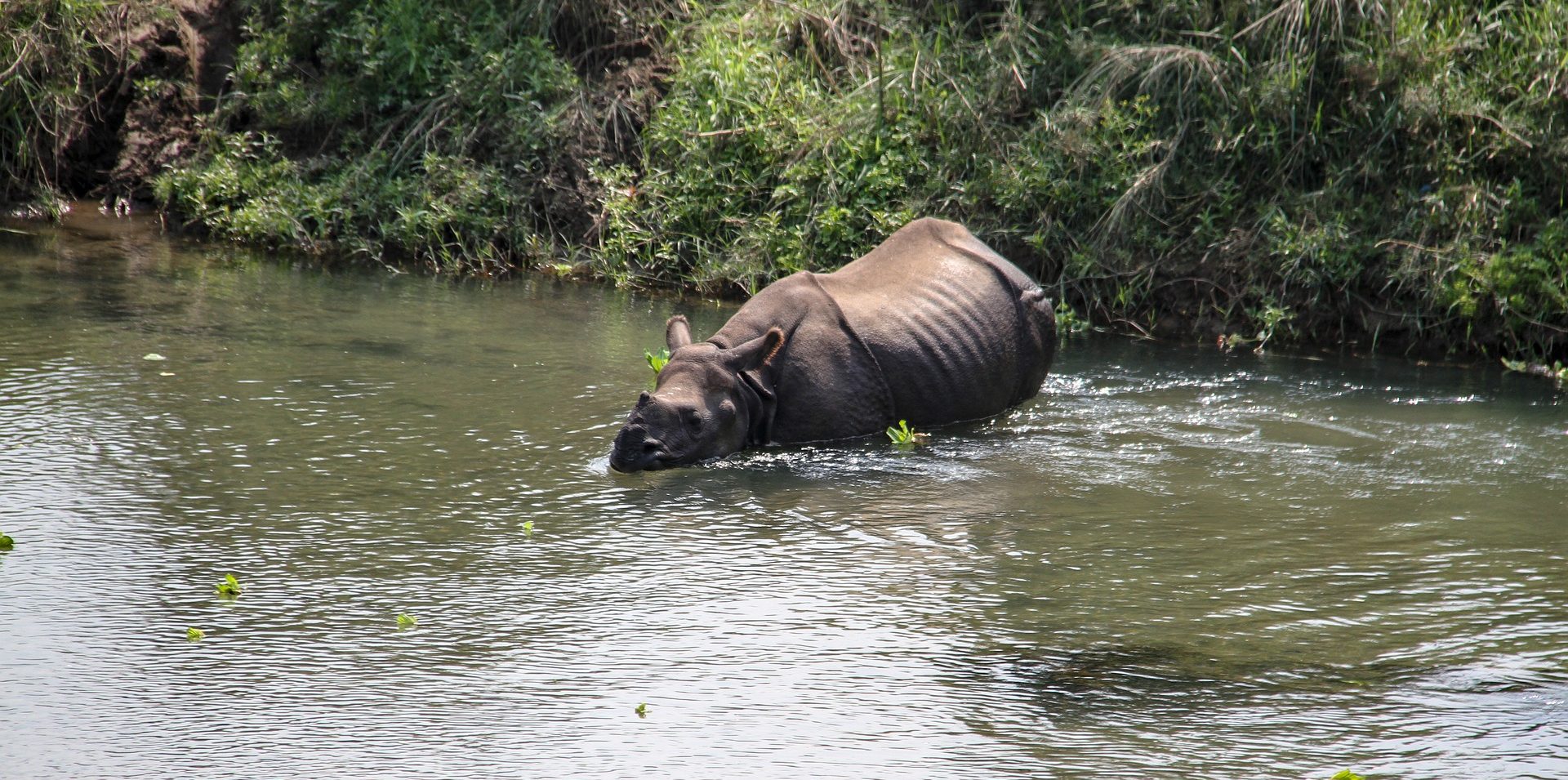Rhino Conservation in Nepal
May 26, 2019

Rhino Conservation in Nepal
In Nepal, the rhino population is estimated to be around 1,000 in the Chitwan Valley until 1950. The Rana rulers had been using the area for their leisure sport hunting. This made the areas inaccessible to the general public. Another factor that shielded the area from invasive human settlements was rampant malaria in the area at that time. However, after the end of the Rana regime in 1950, there was also the eradication of malaria. This led the doors of Chitwan open to people from around the country leading to clearance of wildlife habitat for human settlements, agriculture, and urbanization. This not only destroyed the forest but also affected the wildlife population mainly of the large mammals like tigers, elephants, and rhinos. As a result, the rhino population dropped to less than 100 in the late 1960s.
Recognizing the urgency to avert the erratic diminishing of one-horned rhinoceros. Nepal’s government developed the “Gainda Gasti,” an armed Rhino Patrol Unit in 1961. This is proclaimed to be the remaining prime rhino habitats, about 544 sq. Km along the rivers Rapti, Narayani, and Reu as Chitwan National Park (CNP) in 1973. The park has later expanded to a complete coverage region of 932 sq. km. Chitwan National Park listed as a World Heritage Site in 1984 for its richness in biological diversity.
After the successful effort of the Department of National Parks and Wildlife Conservation (DNPWC), the declining rhino population began to gradually increase. The CNP has shown that sufficient habitat and protection are provided, the population can rebound vigorously. It is an example of a population that was almost on the verge of extinction that has recovered while still maintaining a high genetic diversity. Various organizations dedicated to conservation have been working for more than three decades to make the rhino population rebound through multiple strategies of protection, livelihood options, awareness campaigns, and law enforcement. Today, it is a success story of how a species that was almost on the brink of extinction that has recovered while still upholding a high genetic diversity.
Since its establishment, Wildlife Conservation Nepal has worked to protect and conserve endangered animals. Such as one-horned rhinoceros by supporting enforcement organizations such as National Parks and District Forest officials through critical data leading to the arrest of poachers and traders. WCN also carries campaigns, training to concerned enforcement agencies to enhance their skills. Similarly, it has been conducting research and conservation awareness and advocacy programs at every sector and level of the society. With the support of different enforcement agencies, WCN has been able to bring down rhino poaching. Besides, in order to mitigate the rhino-human conflict, it promotes alternative livelihood programs at a local level.
Source: Wildlife Conservation Nepal
Recommended Package: One-Horned Rhino Tour
